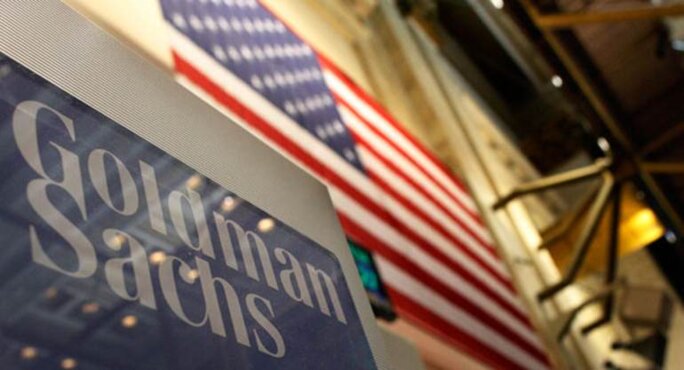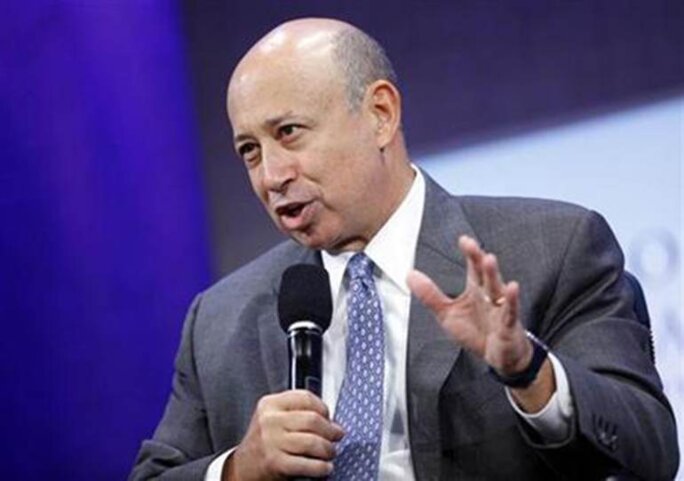The conviction last week of former Goldman Sachs trader Fabrice Tourre on six civil counts of securities fraud left an overwhelming impression of farce. During the entire fortnight of the trial, it was as if just one man, Tourre, was behind the Wall Street malpractices the consequences of which, spreading like a forest fire from the US subprime mortgage market, led to the near meltdown of the world financial system.

Enlargement : Illustration 1

Tourre, 34, who since January no longer works for Goldman – which nevertheless paid his legal fees – was the only person from the Wall Street bank who has undergone cross-examination before a jury on how Goldman speculated in the sub-prime loan market and manipulated it to make money at everyone else's expense. Goldman itself had long since negotiated its own out-of-court settlement.
The judges continued with the comedy right to the end, when the jury found the Frenchman guilty on six of seven claims that he had violated federal securities law by intentionally misleading investors. Jurors also found he had aided and abetted an alleged fraud by Goldman.
'Fabulous Fab', as Tourre nicknamed himself, now faces a ban from the finnacial services industry and a fine of up to 1 billion dollars, whereas his former employer was fined 550 million dollars in its negotiated settlement in July 2010, an unprecedented amount at the time.
The Securities and Exchange Commission (SEC), which filed the lawsuit against Tourre and Goldman Sachs, accusing them of having misled investors by mis-selling financial products, was delighted with the outcome of Tourre's trial. "We are gratified by the jury's verdict," Andrew Ceresney, co-director of the Wall Street regulator's enforcement division, said in a statement. "We will continue to vigorously seek to hold accountable, and bring to trial when necessary, those who commit fraud on Wall Street [...] As shown by this verdict, we proved that Mr. Tourre, as a Goldman Sachs Vice President, put together a complicated financial product that was secretly designed to maximize the likelihood that it would fail, and marketed and sold it to investors without appropriate disclosure."

Enlargement : Illustration 2

The trial was a critical test of the reputation of the American financial markets regulator. So far, all the lawsuits the SEC has taken out against Wall Street players in the wake of the financial crisis have resulted in acquittals or cases dismissed. This was the first time it had won a financial crisis case for five years.
But numerous commentators criticised the outcome. Some argued the regulator had done no more than convict a single individual whose crime was to have been a model employee, who followed the Goldman model body and soul. Others wondered why the SEC did not go after high-level players, preferring instead to target the lower levels.
And this was precisely the unspoken question that dominated the whole trial. How was it possible that Tourre, a young man who had studied at the elite French school École Centrale before joining Goldman's mortgage loans department, had single-handedly put together a high-level fraud that cost investors as sophisticated as Dutch bank ABN Amro, or German bank IKB, billions of dollars? This scenario is even more implausible in the light of revelations of Goldman Sachs' role, as contained in a weighty report from a Senate commission and also published in a book by financial journalist Michael Lewis, The Big Short.
Goldman was alerted to the first signs of the subprime catastrophe in December 2006. Mortgage defaults by households which could not keep up with payments were surging. At the time the bank had over 15 billion dollars of subprime loans and mortgages on its books. The order was given to sell at any price.
'A horrific financial crisis caused by massive fraud'
Goldman's CEO Lloyd Blankfein, who in a 2009 interview with The Sunday Times infamously described his job as "doing God's work", took direct control of the mortgage loans department. In just a few months the bank's subprime exposure was reduced to 2 billion dollars. Over that period, its short positions for the same products - in other words, making negative bets on the mortgage-backed securities market so as to profit as housing prices plummeted - rose from 1 billion to 13.6 billion dollars.

Enlargement : Illustration 3

In November 2007 Blankfein wrote in an e-mail: "Of course we didn’t dodge the mortgage mess. We lost money, then made more than we lost because of shorts." But he added: "It’s not over, so who knows how it will turn out ultimately."

Enlargement : Illustration 4

It was in this context that the Abacus Fund was created. It consisted of credit default swaps (CDSs), derivatives of underlying loans, in this case subprime mortgages. Investors in Abacus became in essence insurers who earned premiums as long as the price of the securities did not collapse.
Abacus's portfolio of CDSs was picked by the hedge fund managed by billionaire John A. Paulson, who worked closely with Goldman Sachs. Shares in Abacus were sold to big banks and institutional investors that will buy anything backed by Goldman. But they were unaware that even as Goldman was feeding them toxic loan derivatives, the Paulson & Co. fund had picked those securities for their high toxicity and was betting against them, speculating they would go south.
This move brought Paulson a profit of over 1 billion dollars. But, on the basis that he acted in good faith, the SEC did not sue him. He was never called as a witness during the trial, either by the prosecution or the defence. In fact, Tourre had renounced his right to call a single witness in the trial. It was as if everyone wanted the matter to be smothered under a layer of silence.
Tourre was merely a zealous cog in the Goldman wheel. He sold enthusiastically, as his superiors asked him to, and demonstrated the assurance and arrogance that comes of being part of the Wall Street elite, as demonstrated in his e-mails cited during the trial.
The court heard that he had written to his girlfriend advising her to look at a "very perceptive" article in The Financial Times. "The whole building is about to collapse anytime now," he wrote, referring to financial markets. "Only potential survivor, the fabulous Fab [...] standing in the middle of all these complex, highly leveraged, exotic trades he created without necessarily understanding all of the implications of those monstrosities!!!"
"But I don’t feel too much to blame," he continued. "The real aim of my work is to make capital markets more efficient and to be the last link in the chain supplyingAmerican consumers with more efficient means to borrow and obtain finance, so my work is imprinted with modesty, nobility and ethics. Strange how good I am at convincing myself!!!"
These e-mails were the backbone of the SEC's case and one of its most ambitious tenets. Prosecution lawyers spent hours dissecting Tourre's willingness to deceive and the fact he had persuaded his clients that the Paulson fund was investing in Abacus - although he knew Paulson was speculating against the market.
But according to the prosecution, Tourre was the only person who knew this. One of the witnesses, former Goldman saleswoman Gail Kreitman, was vigorously cross-examined by Tourre's defence counsel over apparently her inconsistent testimony and she showed difficulty in defending this position.
She had confirmed to SEC inspectors in 2009 that everyone at Goldman knew the Paulson fund was speculating against investors in Abacus, but told the jury in all seriousness that she could no longer remember and had confused the fund with its owner, whose 3 billion dollar-bonus was making headlines at the time.
In an attempt to defend himself, Tourre told the court that plenty of other people at Goldman knew what was going on. "Because I haven't done anything wrong, I'm here literally to tell the truth and clear my name," he said, adding, "I was just the only one who worried about the risks of this product."
But he nevertheless refused to reveal the bank's secrets or break its silence. And his apparently willing role as a low-ranking fall guy suits both the SEC and the justice system, both of which appear to want to hang on to the myth of a single rogue trader.
Charles Ferguson, producer of a documentary on the crisis, Inside Job, and also the author of a book published last year, Predator Nation: Corporate Criminals, Political Corruption, and the Hijacking of America, commented in an interview in May 2012 on how no highly-placed Wall Street executive has yet been called upon to pay for the crimes that led to the crisis. "Three years after a horrific financial crisis caused by massive fraud, not a single financial executive has gone to jail, and that’s wrong," he said.
That comment is all the more pertinent following Tourre's conviction. Wall Street has escaped trial for its role in engendering the financial crisis and, in all probability, it will never be brought to account.
-------------------------
English version by Sue Landau
(Editing by Graham Tearse)


